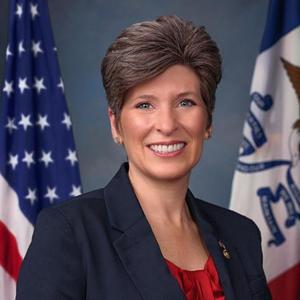Ernst, Grassley urge FDA to clarify hand sanitizer guidelines



May 26, 2020
BY Erin Krueger
Sens. Joni Ernst, R-Iowa, and Chuck Grassley, R-Iowa, sent a letter to Food and Drug Administration Commissioner Stephen Hahn on May 26 urging the agency to clarify its temporary policy for the manufacture of alcohol-based hand sanitizer products during the COVID-19 pandemic.
The letter references temporary guidance that was issued by the FDA on March 27 and updated on April 15. In its March 27 guidance, the FDA said ethanol used for hand sanitizer production does not need to meet U.S. pharmacopeia (USP) or food chemical codex (FCC) standards as long as other purity standards were met. “Based on this guidance, biofuel manufacturers made investments and began production of alcohol for hand sanitizer,” Ernst and Grassley wrote.
Advertisement
“On April 15, the FDA inexplicably revised this guidance to require ethanol made for hand sanitizer to adhere to USP or FCC standards unless otherwise approved and requested ethanol companies to submit data regarding impurities,” they continued. “Our staff has received conflicting messages about FDA’s concerns and what standard applies for alcohol for use in hand sanitizer. At one point, the indication was that FDA had become concerned that gasoline or other fuel additives might come into contact with ethanol in the production process, which appears to reflect a misunderstanding of how ethanol plants operate. Gasoline is not present at ethanol plants, and alcohol for hand sanitizer that is produced at ethanol plants does not come in contact with gasoline, benzene, or other petroleum contaminants.”
Ernst and Grassley indicated that their constituents in Iowa have said most, if not all, submitted samples of ethyl alcohol have been rejected. “It appears that these rejections may be based on levels of acetaldehyde, a substance that occurs naturally in the distillation process, comparable to what is common in alcoholic beverages,” they wrote. “We note that Health Canada—the Canadian government’s equivalent to FDA—has published a temporary standard that slightly relaxes limitations on acetaldehyde so that ethanol producers may help meet the growing need for hand sanitizer. We trust the FDA will use science and data to ensure the proper threshold for acetaldehyde in hand sanitizer, and I encourage you to consider Canada’s approach.”
Advertisement
The senators ask the FDA to update the April 15 guidance to clarify the threshold for acetaldehyde to give regulatory certainty and end the confusion that renewable fuel manufacturers currently face.
A full copy of the letter can be downloaded from Grassley’s website.
Related Stories
U.S. fuel ethanol capacity fell slightly in April, while biodiesel and renewable diesel capacity held steady, according to data released by the U.S. EIA on June 30. Feedstock consumption was down when compared to the previous month.
XCF Global Inc. on July 8 provided a production update on its flagship New Rise Reno facility, underscoring that the plant has successfully produced SAF, renewable diesel, and renewable naphtha during its initial ramp-up.
The U.S. EPA on July 8 hosted virtual public hearing to gather input on the agency’s recently released proposed rule to set 2026 and 2027 RFS RVOs. Members of the biofuel industry were among those to offer testimony during the event.
The U.S. exported 31,160.5 metric tons of biodiesel and biodiesel blends of B30 and greater in May, according to data released by the USDA Foreign Agricultural Service on July 3. Biodiesel imports were 2,226.2 metric tons for the month.
The USDA’s Risk Management Agency is implementing multiple changes to the Camelina pilot insurance program for the 2026 and succeeding crop years. The changes will expand coverage options and provide greater flexibility for producers.
Upcoming Events










